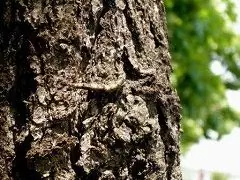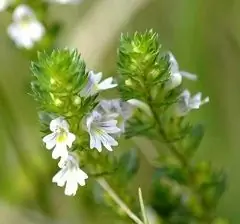Table of contents:

Video: Quince - Useful Properties, Application, Contraindications

2024 Author: Rachel Wainwright | [email protected]. Last modified: 2023-12-15 07:39
Quince
Quince is a monotypic genus of plants in the Pink family. The common quince (or oblong) is the only representative of this genus. Cultivated in the Caucasus, Central Asia, Moldova and Crimea. Found in the wild in eastern Russia. The fruits are used for food - raw, as a seasoning for meat, in the form of jam, jelly and compotes. Due to its numerous medicinal properties, the plant is widely used in folk medicine.
The ratio of BJU in the product

Source: depositphotos.com How to burn 57 kcal?
| Walking | 14 minutes |
| Jogging | 6 minutes |
| Swimming | 5 minutes. |
| A bike | 8 minutes |
| Aerobics | 11 minutes |
| Household chores | 19 minutes |
Useful properties of quince
Quince fruits contain vitamins PP, A, C, E, B6, B2, B1, potassium, copper, citric and malic, tartronic acids, pectin. 100 g of ripe quince contains 8.9 g of carbohydrates, of which 7 g is fructose, and the rest is sucrose and glucose.
Such useful properties of quince are known: astringent, diuretic, antiseptic, fortifying, hemostatic. Due to its fiber content and lack of cholesterol, quince is useful for weight loss and detoxification.
For the treatment and strengthening of the body, seeds, juice and fresh quince fruits are used.
Application
Useful properties of quince are used to treat diseases of the gastrointestinal tract, cardiovascular system, digestive tract, kidney anemia, bronchial asthma, to stop uterine bleeding, eliminate dry and wet cough, heal cracks in the anus, burns and skin irritations, inflammation in the oral cavity (periodontal disease, gingivitis).
To improve appetite, stop uterine bleeding, a decoction of dry ripe quince is boiled: 10 g of fruits are poured into 100 ml of boiling water. Take one spoonful of tablespoon before meals.
For liver pathologies and to eliminate vomiting, boiled and pureed quince is used.
Fresh fruits, juice are useful for digestive disorders, accompanied by bleeding and diarrhea. Fresh quince is effective as a diuretic in the complex treatment of heart diseases, and as a means of preventing anemia after a long illness.
Quince syrup is drunk with anemia. To prepare it, ripe quince is cut, poured with water and boiled until the pieces soften. After they squeeze out the juice and boil it well.
The astringent properties of quince are used for diarrhea, hemoptysis - they prepare and drink a decoction of quince seeds. You can also use the broth externally: lubricate the skin to soften it, gargle with inflammation, make lotions for the eyes.
For the healing of cracks in the anus, local poultices are made from the juice of quince fruits.
With inflammation of the gums, lotions are made from the mucus of quince seeds. To prepare it, 10 g of seeds are poured with 200 ml of warm water and shaken for 7-9 minutes. The seeds must be whole, you cannot grind them, because because of this, the poisonous substance amygdalin is released, which turns into cyanide in the stomach.
Due to the enveloping, expectorant properties of quince, prepared mucus can be used for bronchitis, diarrhea, gastrointestinal ulcers, colitis. Take mucus in a tablespoon 3-4 times daily 30 minutes after a meal. The mucus can be used to treat burns and skin irritations.
Quince leaves are able to weaken and stop attacks of bronchial asthma. An infusion is prepared from the leaves: 5 g of leaves are poured into 250 ml of hot water and boiled for another 15 minutes in a water bath. Drink an infusion of two tablespoons 3-4 times every day before meals. Store it for no more than three days in the refrigerator.

From the seeds, leaves of the fruit, you can make tea, which has a diuretic effect and therefore is effective in kidney pathologies. For its preparation, dry leaves (1 tablespoon) are poured over 250 ml of boiling water, boiled for another 5-6 minutes, cooled, filtered. Take a medicinal drink every day 3 times in a tablespoon.
Contraindications to the use of quince
Quince is harmful for constipation, pleurisy. You should also know that the fluff on the skin of the fruit is harmful to the larynx, voice and therefore is not recommended for singers. Therefore, before use, the fluff from the quince fruits is carefully removed with a sponge.
To buy a really healthy quince, they buy large and dense, evenly colored yellow or orange fruits without dents. The fruits do not tolerate the shake well, therefore, in order to preserve the beneficial properties of the quince, they are taken home with great care and placed in the refrigerator, where, as a whole, it can be stored for 2 months.
YouTube video related to the article:
Found a mistake in the text? Select it and press Ctrl + Enter.
Recommended:
Artichoke - Properties, Application, Contraindications, Calorie Content

The artichoke is a perennial herb cultivated in warm countries as a vegetable. Artichoke can be used to reduce blood cholesterol and normalize metabolic processes in the body
Oak Bark - Decoction, Properties, Application, Indications, Contraindications

Oak bark is a herbal remedy with anti-inflammatory, tanning and astringent effects. It is widely used in dentistry and ENT practice for: bleeding gums; inflammatory diseases of the oral mucosa, etc
Sage - Application, Properties, Contraindications, Calorie Content

Sage is a perennial plant of the Lamiaceae family, which is widely used in cooking
Eyebright - Properties, Application, Reviews, Contraindications

Eyebright is a plant of the Norichnikov family. Used for such health problems: lack of appetite, tonsillitis, rheumatism, jaundice, stomach catarrh, increased stomach acidity, indigestion
Shepherd's Purse - Properties, Application, Contraindications

Shepherd's purse is used for uterine, gastric, renal and pulmonary bleeding, vomiting, diarrhea and dysentery. It has good anti-inflammatory and wound healing properties, therefore it is used for injuries






